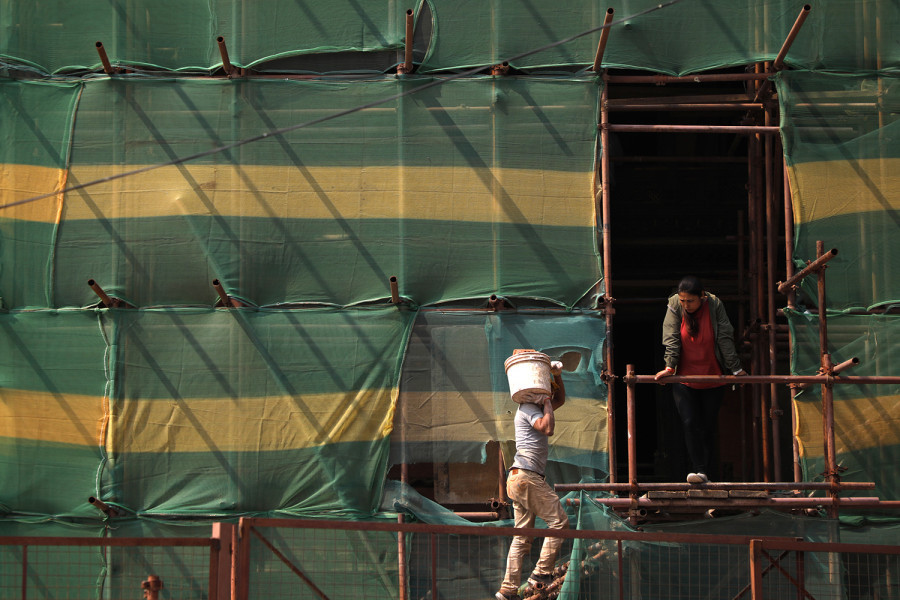Editorial
Migration woes
The government must come up with plans to reintegrate foreign employment returnees and aspirants.
In the wake of Covid-19, two things were imminent right from the start when it came to Nepal’s flow of remittance: Hundreds of thousands of Nepalis working abroad would be forced to return home, and there would be a sudden decline in outmigration. Latest government data already shows that there is a slump in the issuance of labour permits. A total of 368,433 labour permits were issued to aspiring migrant workers during 2019-20, compared to 508,828 during the previous fiscal (2018-19), according to the Department of Foreign Employment.
The slump is largely due to the lockdown imposed by Nepal as well as destination countries over the last four months or so. Then again, migrant workers who have lost their jobs in destination countries, especially in the Persian Gulf, Malaysia and South Korea, have started to return home, with more likely to fly back as flights resume.
The money sent by Nepali migrant workers has been a mainstay of Nepal’s economy, with remittance equivalent to around 25 percent of the country’s gross domestic product. At a time when the country is struggling to cope with an economic crisis, losing remittance will be a major setback. As Covid-19 spread across the world, the writing was on the wall. There were clear indications of a global recession and employment conditions, but the Nepal government by and large turned a blind eye. While its response to the pandemic itself is not up to the mark, it has also failed to take cognisance of the inevitable impacts on the economy.
According to the Migration in Nepal report, there are an estimated 500,000 Nepali migrants in Malaysia, the most popular labour destination, followed by Qatar with over 400,000, Saudi Arabia 334,451, the United Arab Emirates 224,905 and Kuwait 70,000. These five countries alone accommodate over 1.5 million Nepalis.
Although unofficial estimates also vary widely, the Nepali population in India is said to number between three to four million. A majority of Nepalis who work abroad are employed in India. But since Nepal and India share an open border, there are no official figures.
With lockdowns in force and businesses shuttered, a significant number of these Nepalis are currently out of a job, and even when the lockdowns are relaxed, they are not likely to be employed, given the beating most economies are currently taking.
A government task force formed to study the impact of Covid-19 on the foreign employment sector and the economy said back in June that the country needed to create 1.5 million jobs, more than double the target set by the government, to avoid an impending unemployment crisis. But the government is yet to come up with a solid plan to support those who have lost their jobs at home due to the pandemic. Now, with the number of migrants set to decline and more Nepalis returning home, the government is scrambling to handle the impact of returnees and declining remittance flows amid a global health emergency.
Amid growing job losses at home, the failure to come up with any plans at all to reintegrate returnees and those who’ve failed to go abroad is equivalent to staring at a high tide that’s fast approaching. The government must pull out all the stops and get all the agencies together to turn the challenges posed by the pandemic into an opportunity. A ritualistic announcement of lower-interest loans for entrepreneurs or the agriculture sector with no clear follow-through will not work anymore.




 9.12°C Kathmandu
9.12°C Kathmandu














